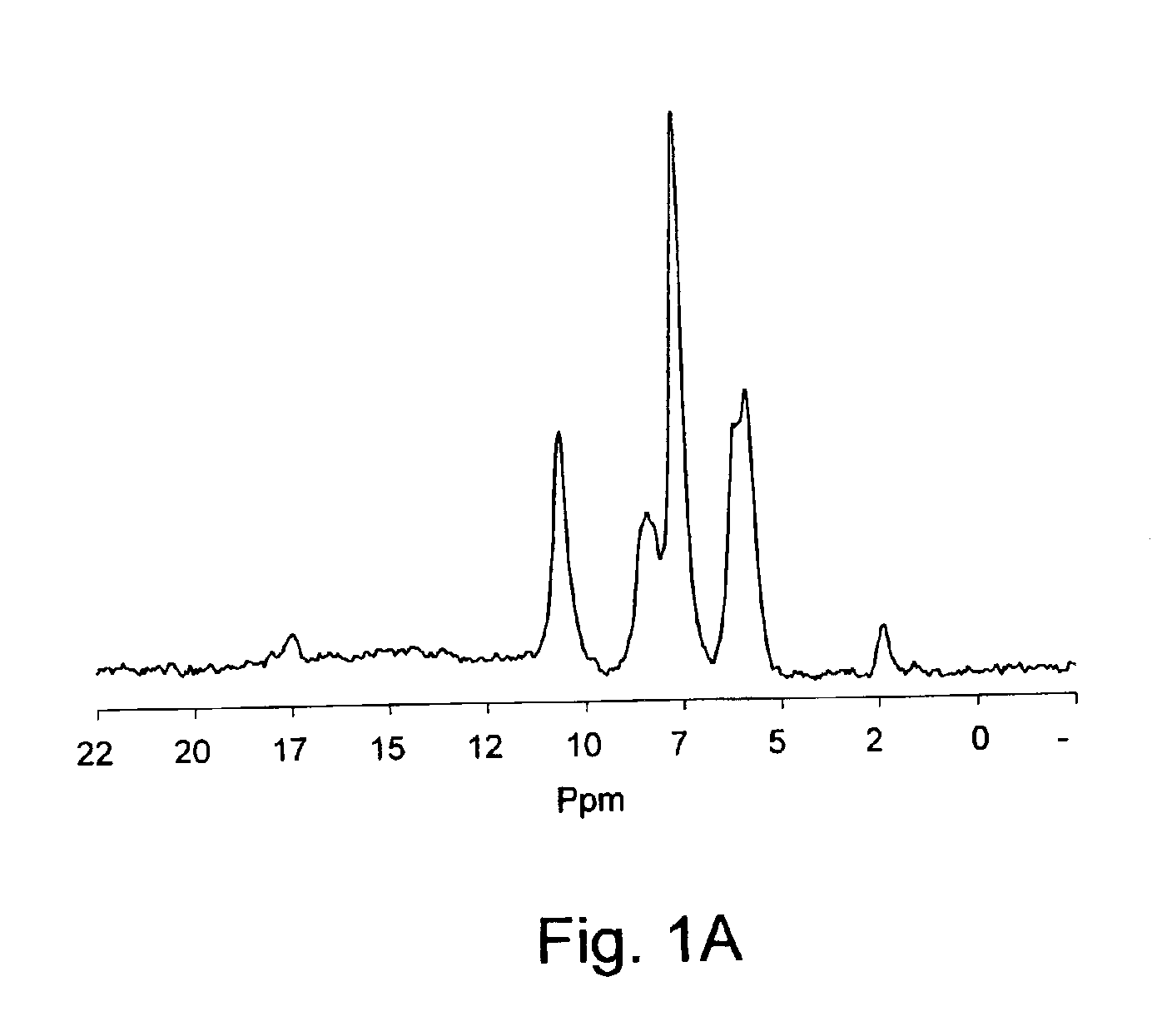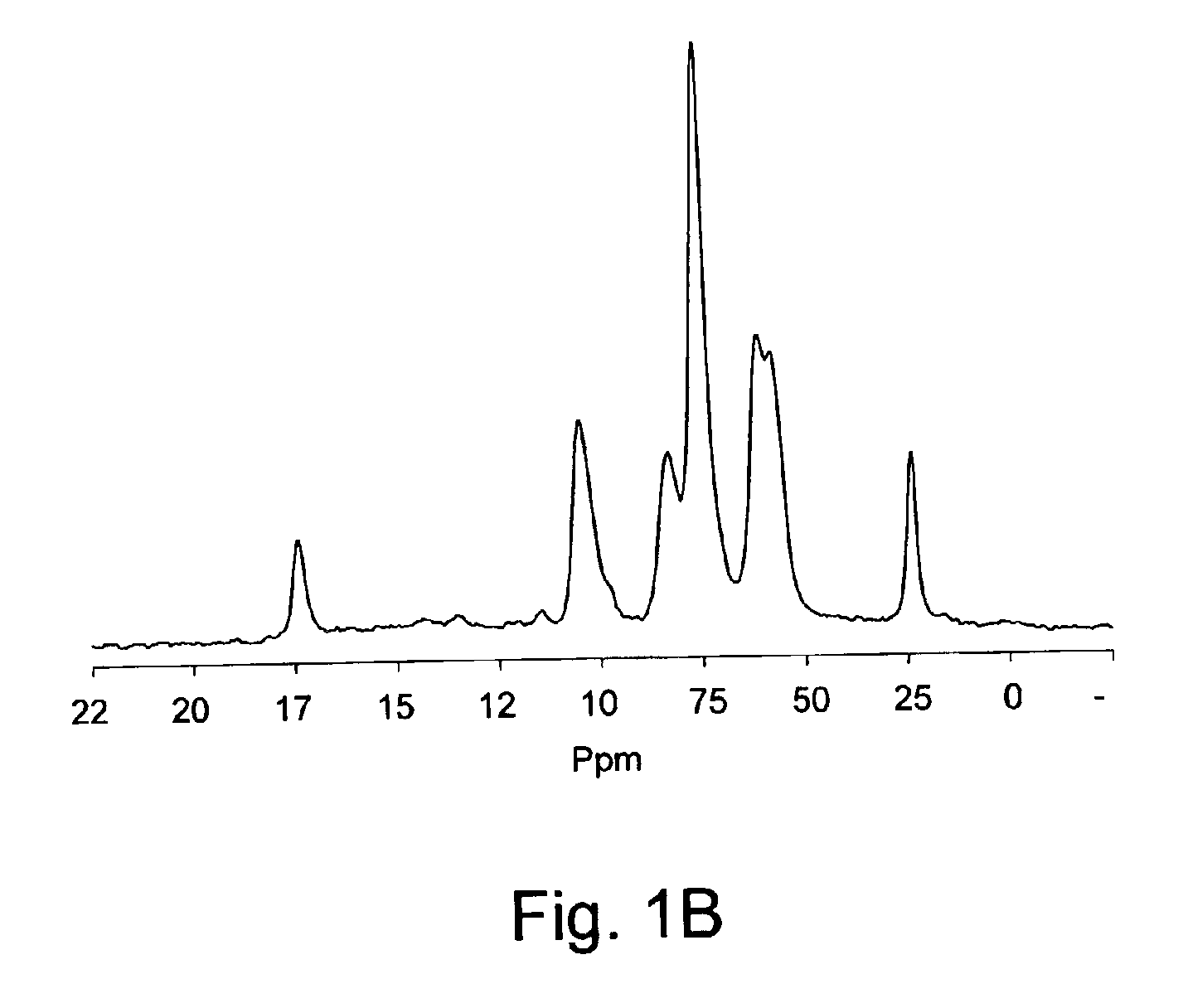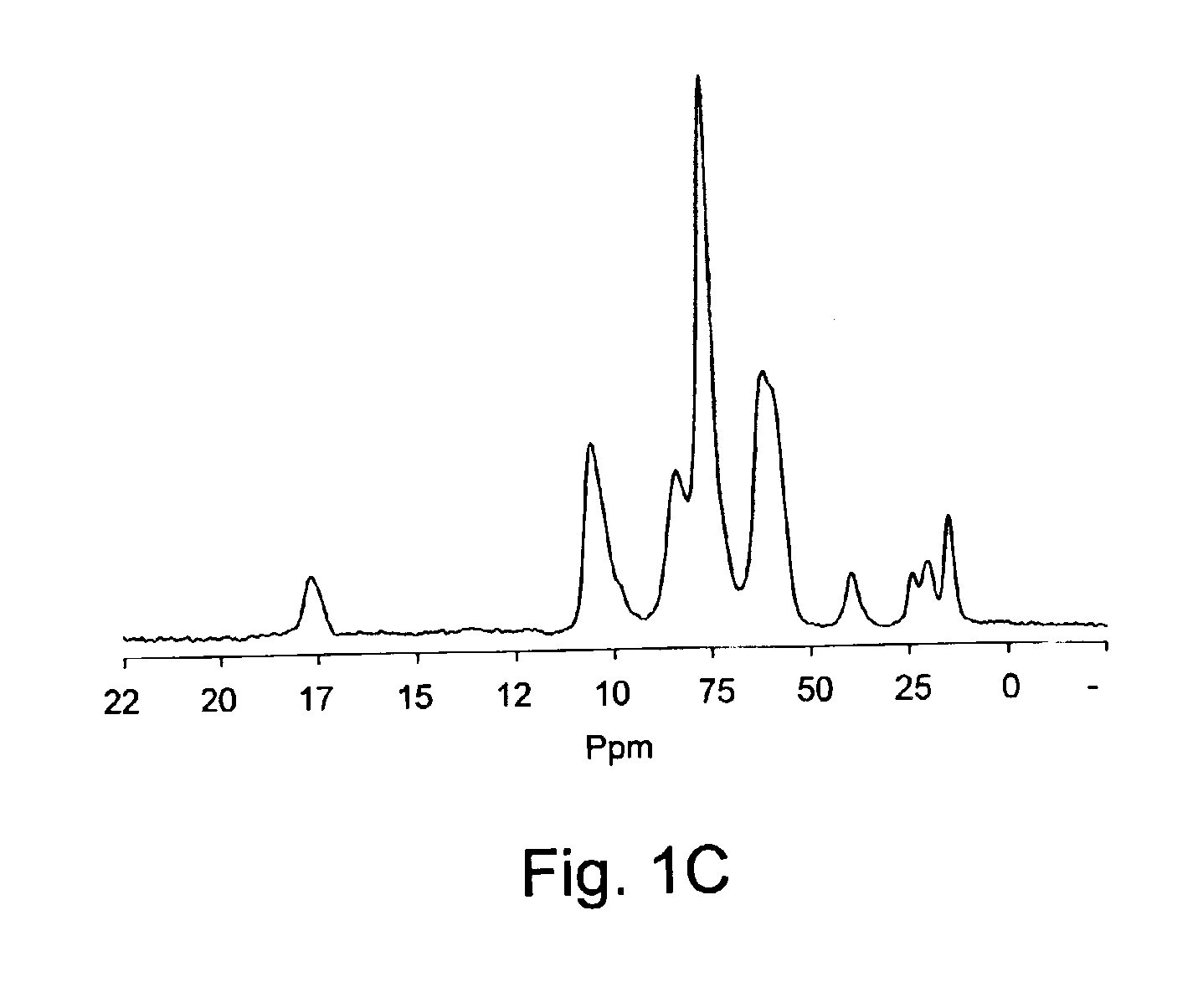Composition and method to homogeneously modify or cross-link chitosan under neutral conditions
- Summary
- Abstract
- Description
- Claims
- Application Information
AI Technical Summary
Benefits of technology
Problems solved by technology
Method used
Image
Examples
example 1
Homogenous Acetylation of Chitosan
[0088]A chitosan solution (pH˜5) was prepared by completely dissolving 1.17 g of chitosan (85% deacetylated) in 50 mL of a solution of HCl (0.1M). The chitosan solution was cooled down to 4° C. and while maintaining the cold temperature, its pH was adjusted to 6.8 by adding ˜1.42 g of glycerol-phosphate disodium salt. To the resulting neutral solution, acetic anhydride was added (see Table 1). Then, the reaction was allowed to proceed under continuous stirring and room temperature for about 16 h. At the end, the reaction mixture was transferred into a dialysis bag and dialysed against a large volume of pure water for three days to remove salts and unreacted reagent. The N-acetylated chitosan so obtained was recovered by freeze-drying or by precipitating in 50% water / 50% methanol solution of NH4OH (0.2M), followed by filtration, washing with methanol repeatedly and air-drying. 13C NMR analysis confirms the N-acetyl modification (see FIG. 1B) and the ...
example 2
Homogenous N-Butyryl Modification of Chitosan
[0091]The experiment was performed as in Example 1 above, except that butyric anhydride was used instead acetic anhydride.13C NMR analysis confirms the N-butyryl modification (see FIG. 1C) and the integration of peaks allows the determination of a degree of substitution sensibly close to that deducted from conductimetric titration (see Table 2).
[0092]
TABLE 2Butyric Anhydride(BA)% of NH2substituted(g)BA / NH2 ratioTitration13C NMR0.000.00000.23590.29330270.47290.58851510.70880.88166640.94571.1767472
example 3
Chitisan Gel Cross-Linked with Glyoxal
[0093]0.47 g of chitosan (85% deacetylated) was entirely dissolved in 20 mL of HCl solution (0.1M). The chitosan solution so obtained had a pH of 5. This solution was cooled down to 4° C. About 0.67 g of glycerol-phosphate disodium salt was added to the chitosan solution to adjust its pH to 6.8. While the resulting solution was maintained at cold temperature, 0.2, 0.1, 0.02 or 0.01 mL of aqueous solution of glyoxal (87.2 mM) was added and homogenised. Transparent gels were formed at 37° C. more or less rapidly depending on the glyoxal concentration (see Table 3).
[0094]
TABLE 3GlyoxalGelation Time at 37° C.(mM)(min)1.744immediate0.872immediate0.262200.174300.08790
PUM
| Property | Measurement | Unit |
|---|---|---|
| Fraction | aaaaa | aaaaa |
| Fraction | aaaaa | aaaaa |
| Fraction | aaaaa | aaaaa |
Abstract
Description
Claims
Application Information
 Login to View More
Login to View More - R&D Engineer
- R&D Manager
- IP Professional
- Industry Leading Data Capabilities
- Powerful AI technology
- Patent DNA Extraction
Browse by: Latest US Patents, China's latest patents, Technical Efficacy Thesaurus, Application Domain, Technology Topic, Popular Technical Reports.
© 2024 PatSnap. All rights reserved.Legal|Privacy policy|Modern Slavery Act Transparency Statement|Sitemap|About US| Contact US: help@patsnap.com










